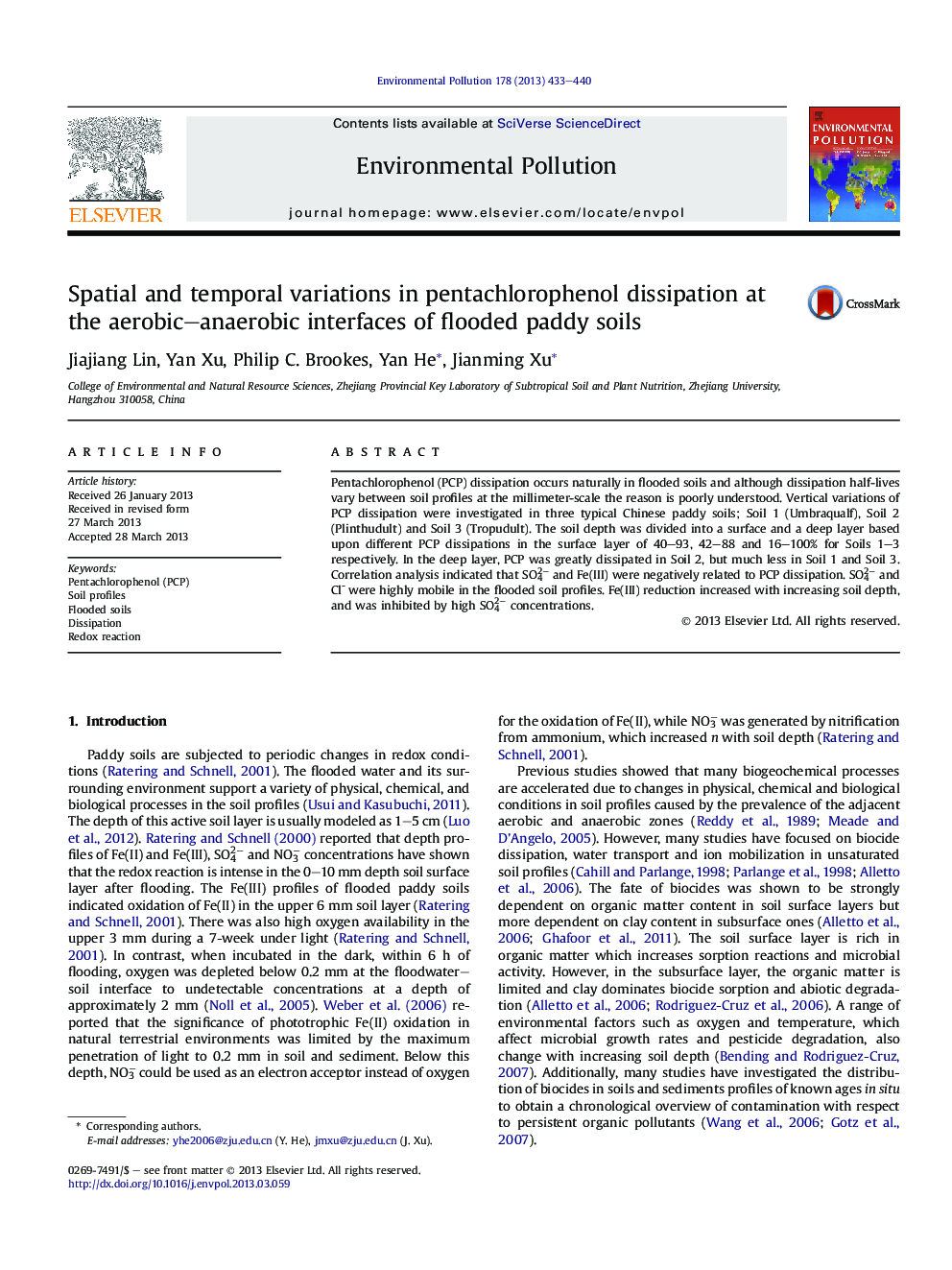| Article ID | Journal | Published Year | Pages | File Type |
|---|---|---|---|---|
| 6319000 | Environmental Pollution | 2013 | 8 Pages |
Abstract
Pentachlorophenol (PCP) dissipation occurs naturally in flooded soils and although dissipation half-lives vary between soil profiles at the millimeter-scale the reason is poorly understood. Vertical variations of PCP dissipation were investigated in three typical Chinese paddy soils; Soil 1 (Umbraqualf), Soil 2 (Plinthudult) and Soil 3 (Tropudult). The soil depth was divided into a surface and a deep layer based upon different PCP dissipations in the surface layer of 40-93, 42-88 and 16-100% for Soils 1-3 respectively. In the deep layer, PCP was greatly dissipated in Soil 2, but much less in Soil 1 and Soil 3. Correlation analysis indicated that SO42â and Fe(III) were negatively related to PCP dissipation. SO42â and Cl- were highly mobile in the flooded soil profiles. Fe(III) reduction increased with increasing soil depth, and was inhibited by high SO42â concentrations.
Related Topics
Life Sciences
Environmental Science
Environmental Chemistry
Authors
Jiajiang Lin, Yan Xu, Philip C. Brookes, Yan He, Jianming Xu,
